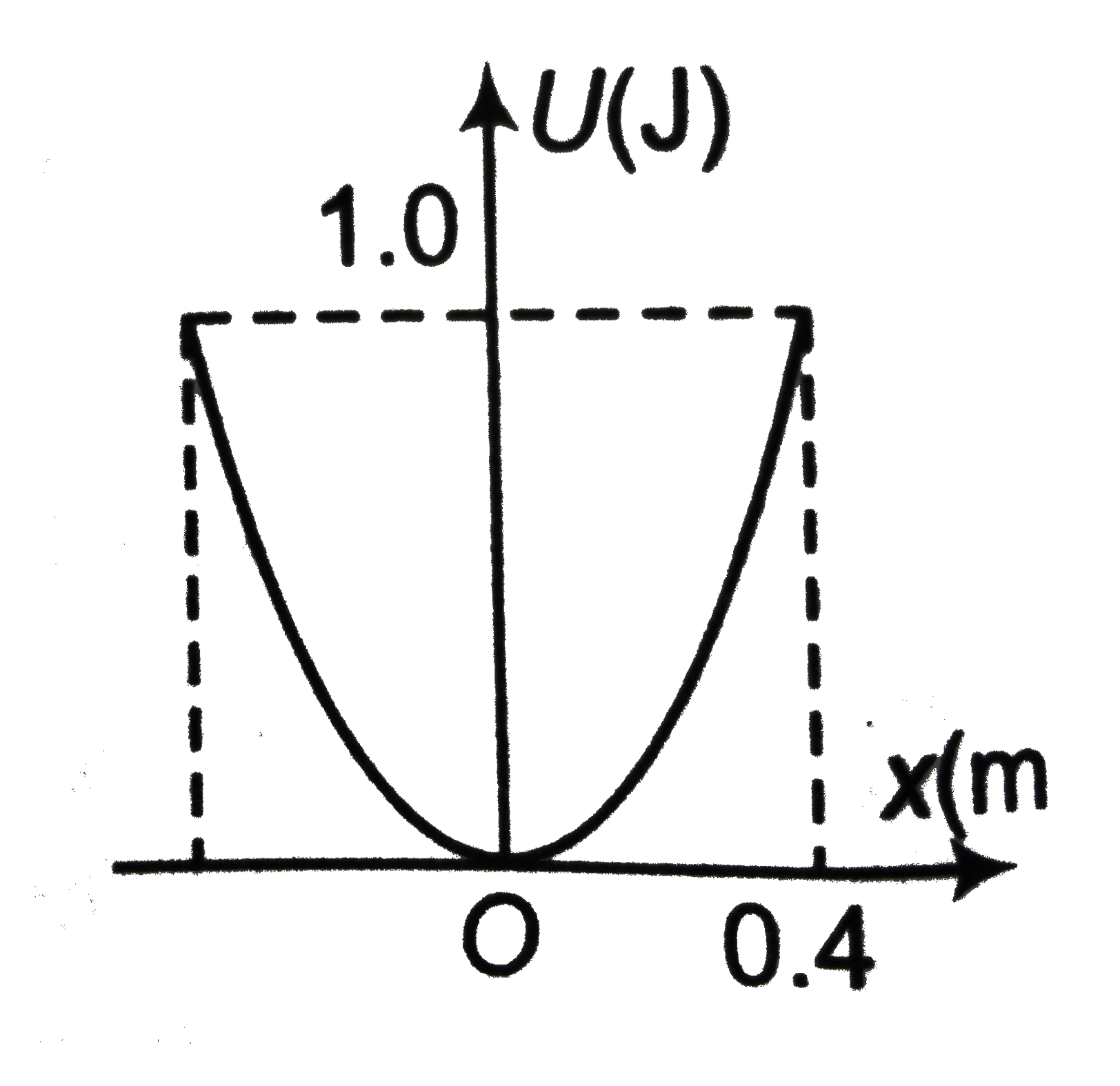A partical of mass 0.2kg executes simple harmonic motion along a path of length 0.2m at the rate of 600oscillations per minute. Assum at t=0. The partical start SHM in positive direction. Find the kinetic potential energies in joules when the displacement is x=A/2 where, A stands for the amplitude.
To solve the problem, we will follow these steps:
Step 1: Determine the Amplitude (A)
The amplitude A is half of the path length. Given that the path length is 0.2m:
A=0.2m2=0.1m
Step 2: Calculate the Frequency (ν)
The frequency ν is given as 600 oscillations per minute. To convert this to hertz (oscillations per second):
ν=60060=10Hz
Step 3: Calculate the Angular Frequency (ω)
The angular frequency ω is related to the frequency by the formula:
ω=2πν
Substituting the value of ν:
ω=2π(10)=20πrad/s
Step 4: Calculate the Velocity (v) at x=A2
We need to find the velocity when the displacement x is A2:
x=A2=0.12=0.05m
Using the formula for velocity in simple harmonic motion:
v=ω√A2−x2
Substituting the values:
v=20π√(0.1)2−(0.05)2
Calculating A2−x2:
(0.1)2−(0.05)2=0.01−0.0025=0.0075
Thus,
v=20π√0.0075=20π⋅0.0866≈5.44m/s
Step 5: Calculate the Kinetic Energy (KE)
The kinetic energy is given by the formula:
KE=12mv2
Substituting the values of mass m=0.2kg and v:
KE=12⋅0.2⋅(5.44)2
Calculating (5.44)2:
(5.44)2≈29.5936
Thus,
KE=12⋅0.2⋅29.5936≈2.95936J
Step 6: Calculate the Potential Energy (PE)
The potential energy in simple harmonic motion is given by:
PE=12kx2
Where k=mω2. First, we calculate k:
k=0.2⋅(20π)2
Calculating (20π)2:
(20π)2=400π2≈400⋅9.87≈3948N/m
Thus,
k=0.2⋅3948≈789.6N/m
Now substituting into the potential energy formula:
PE=12⋅789.6⋅(0.05)2
Calculating (0.05)2:
(0.05)2=0.0025
Thus,
PE=12⋅789.6⋅0.0025≈0.987J
Final Results
- Kinetic Energy KE≈2.96J
- Potential Energy PE≈0.99J
The amplitude A is half of the path length. Given that the path length is 0.2m:
The frequency ν is given as 600 oscillations per minute. To convert this to hertz (oscillations per second):
The angular frequency ω is related to the frequency by the formula:
We need to find the velocity when the displacement x is A2:
The kinetic energy is given by the formula:
The potential energy in simple harmonic motion is given by:
- Kinetic Energy KE≈2.96J
- Potential Energy PE≈0.99J
Topper's Solved these Questions
- BOOK - CENGAGE PHYSICS ENGLISHCHAPTER - LINEAR AND ANGULAR SIMPLE HARMONIC MOTIONEXERCISE - Solved Example15videos
LINEAR AND ANGULAR SIMPLE HARMONIC MOTION
- BOOK - CENGAGE PHYSICS ENGLISHCHAPTER - LINEAR AND ANGULAR SIMPLE HARMONIC MOTIONEXERCISE - Exercise 4.123videos
LINEAR AND ANGULAR SIMPLE HARMONIC MOTION
- BOOK - CENGAGE PHYSICS ENGLISHCHAPTER - KINETIC THEORY OF GASES AND FIRST LAW OF THERMODYNAMICSEXERCISE - Interger11videos
KINETIC THEORY OF GASES AND FIRST LAW OF THERMODYNAMICS
- BOOK - CENGAGE PHYSICS ENGLISHCHAPTER - MISCELLANEOUS KINEMATICSEXERCISE - Interger type3videos
MISCELLANEOUS KINEMATICS
Similar Questions
A particle executes simple harmonic motion according to equation 4d2xdt2+320x=0. Its time period of oscillation is :-
View SolutionA particle of mass 40 g executes a simple harmonic motion of amplitude 2.0 cm. If the time period is 0.20 s, find the total mechanical energy of the system.
View SolutionA particle of mass 40 g executes a simple harmonic motion of amplitude 2.0 cm. If the time period is 0.20 s, find the total mechanical energy of the system.
View SolutionA particle of mass 0.50 kg executes a simple harmonic motion under a force F=−(50Nm−1)x. If it crosses the centre of oscillation with a speed of 10ms−1, find the amplitude of the motion.
View SolutionA particle of mass 2kg moves in simple harmonic motion and its potential energy U varies with position x as shown. The period of oscillation of the particle is
 View Solution
View SolutionA particle of mass 2kg moves in simple harmonic motion and its potential energy U varies with position x as shown. The period of oscillation of the particle is
 View Solution
View SolutionA particle executes simple harmonic motion of amplitude A along the X-axis. At t=0 the position of the particle is x=A2 and it moves along the positive x-direction. Find the phase constant δ if the equation is written as x=Asin(ωt+δ)
View SolutionA particle of mass 0.1 kg executes SHM under a for F=(−10x) N. Speed of particle at mean position 6m/s. Then amplitude of oscillations is
View SolutionAn object of mass 0.2 kg executes simple harmonic oscillation along the x-axis with a frequency 25π. At the position x = 0.04m, the object has kinetic energy 0.5J and potential energy 0.4J. amplitude of oscillation is (potential energy is zero mean position).
View SolutionA particle executes simple harmonic motion of amplitude A along the x - axis. At t=0, the position of the particle is x=A2 and it moves along the positive x - direction. Find the phase constant δ, if of the equation is written as x=Asin(ωt+δ).
View Solution
